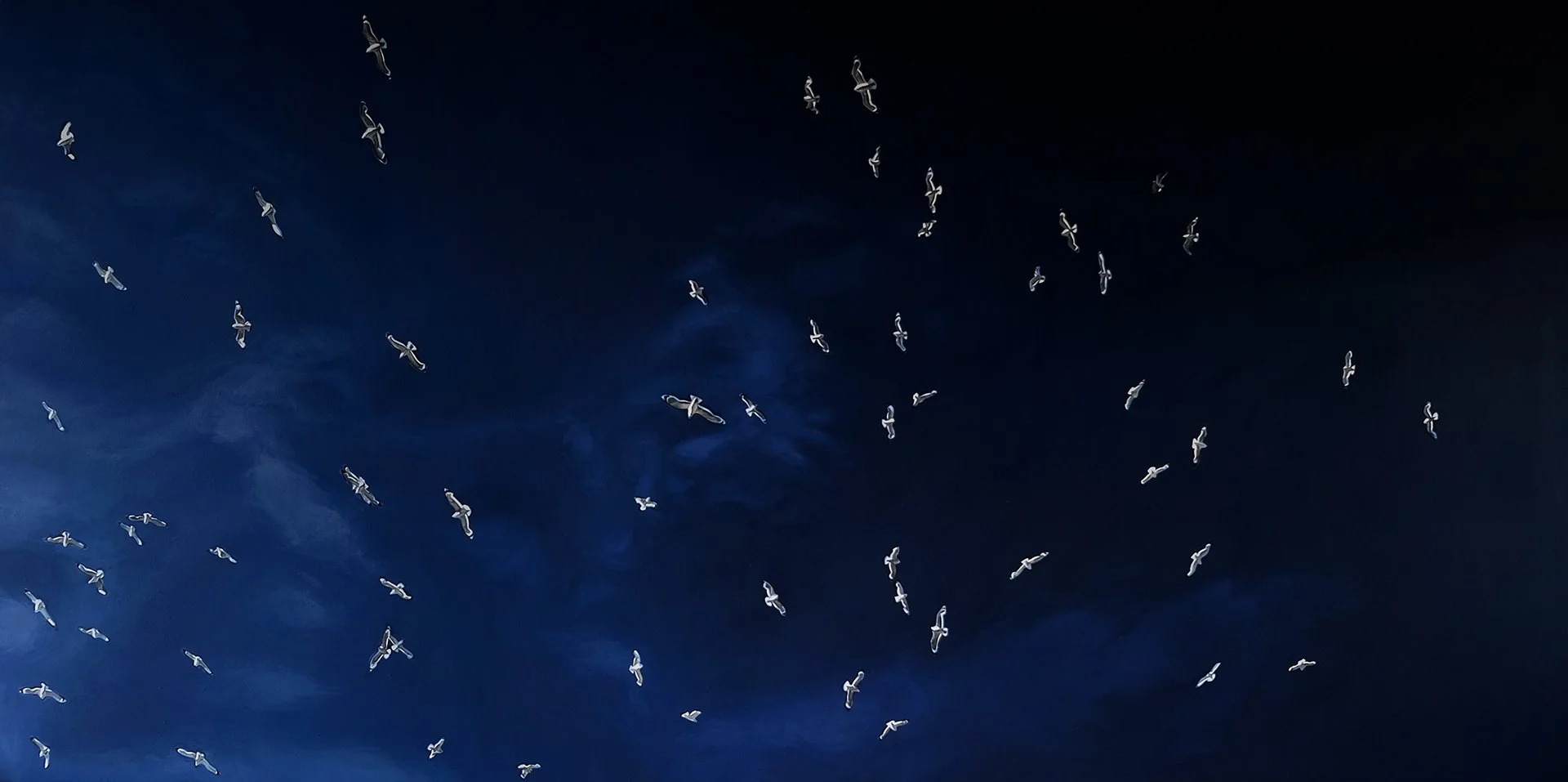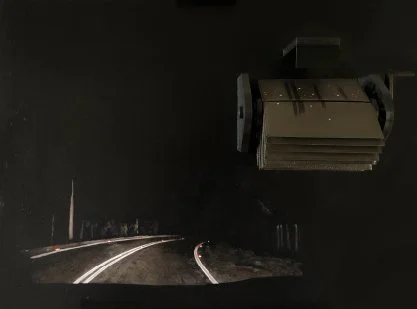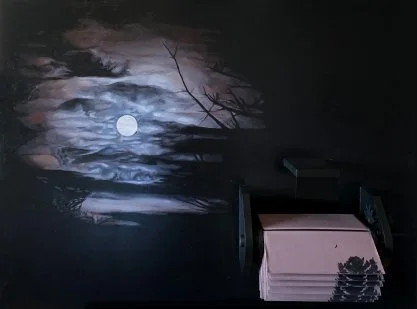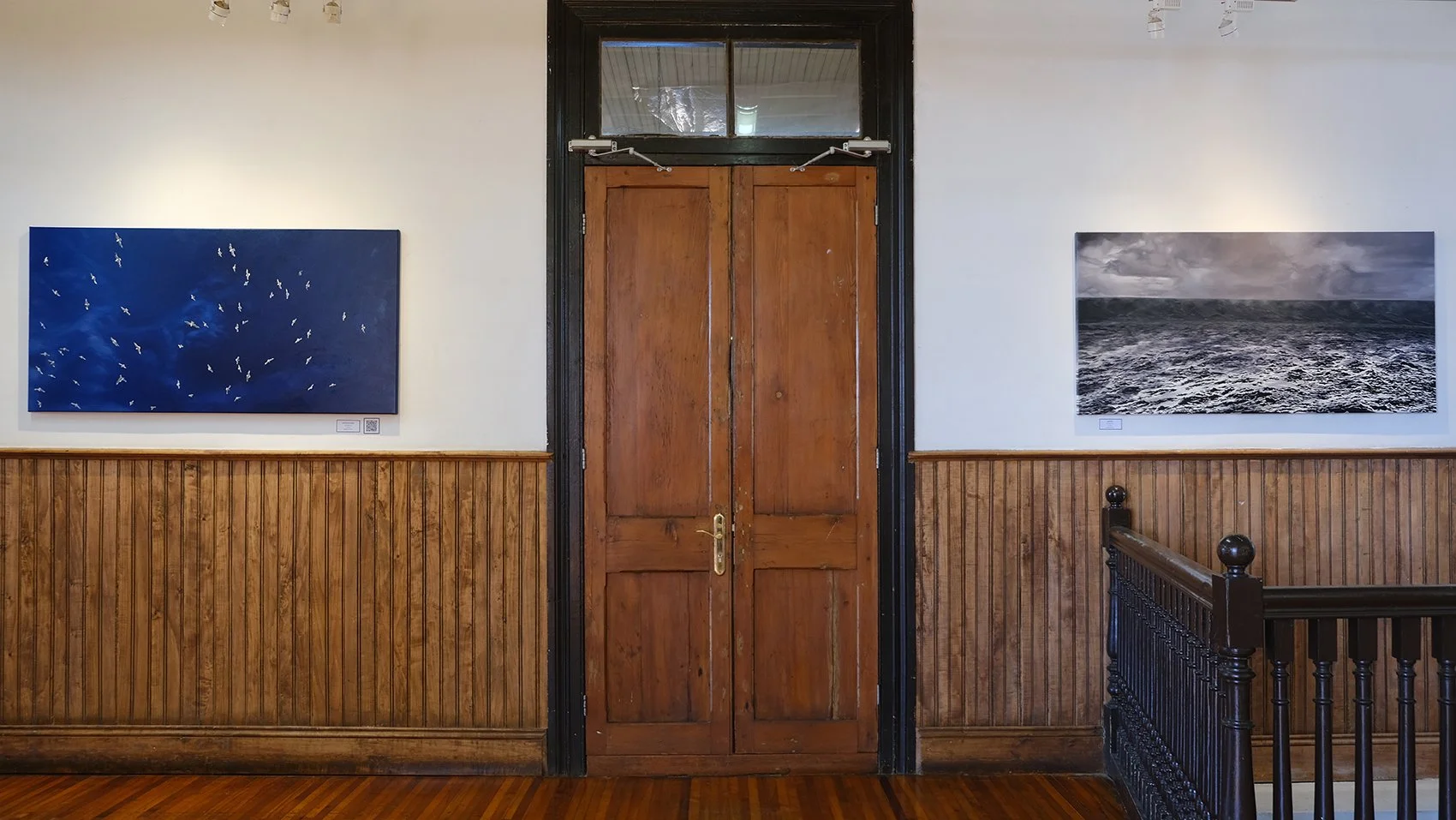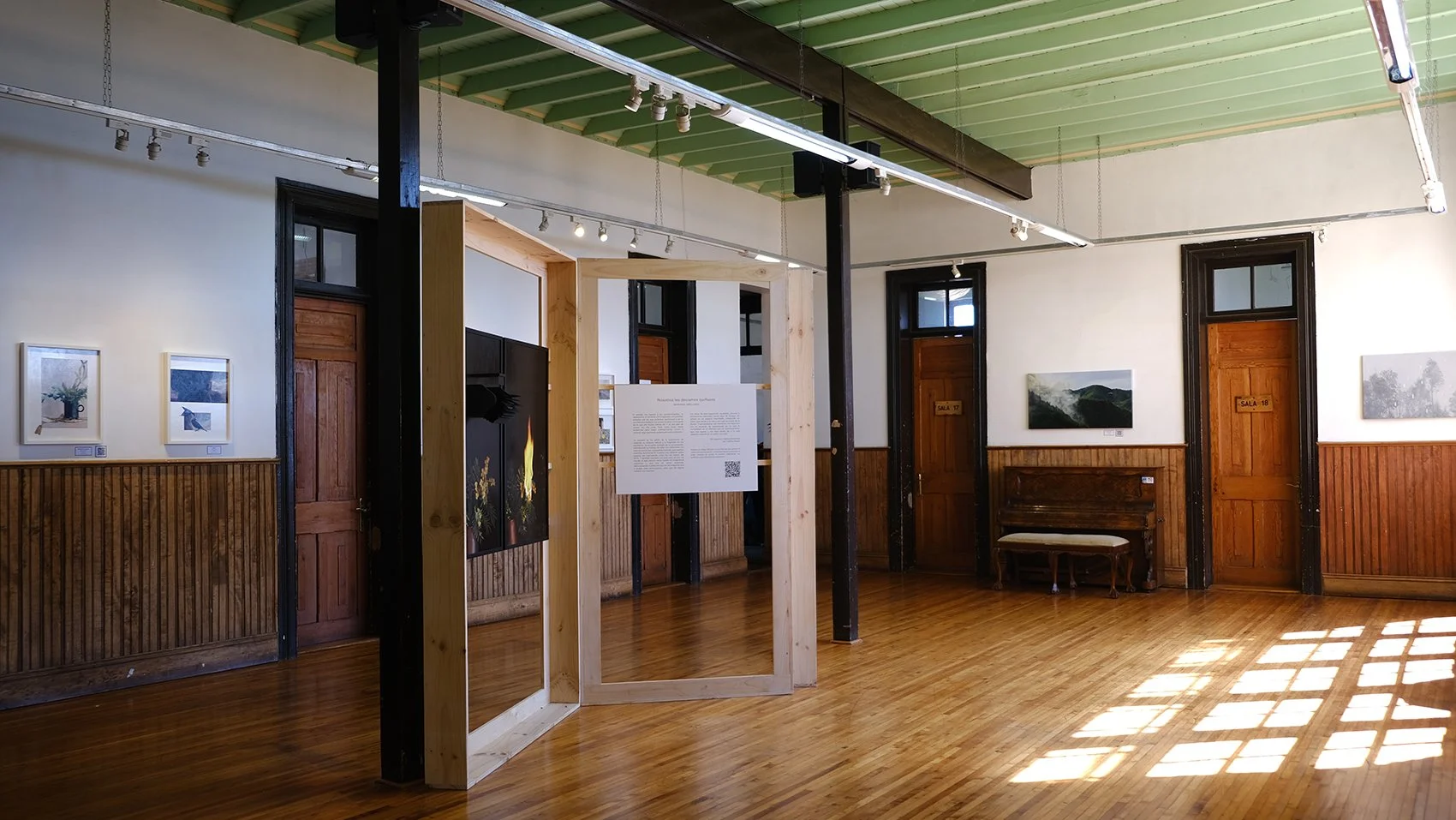Nosotros les decíamos quiñazos
Centro Cultural Agustín Ross, Pichilemu
2021



De augurios y réplicas
Catalina Bauer. Noviembre 2021
El paisaje, los lugares y sus acontecimientos; la experiencia, el recuerdo y lo imaginado, son algunos de los temas de esta exposición, y también son posibles entradas por las que podemos asomarnos a ver lo que Mariana Arellano nos quiere mostrar. No como algo completamente resuelto, sino como parte de lo que ella misma intenta ver. Y en ese afán de querer ver y comprender, ella pinta. Pinta como quien reúne evidencias para luego contraponerlas. Como si mirando algo fijamente pudiera animarlo y elevarlo. Pinta en cámara lenta, con manivela, cuadro a cuadro. Capa tras capa se va adentrando como quien, y aquí la cito; haciendo arte enfrenta sus miedos.
Su proceso, extendido y ralentizado por la pandemia, se ha valido de la experiencia de vivir en Pichilemu, de observar su entorno natural y percibir el constante movimiento, y a la vez, la fragilidad en sus equilibrios. Se ha nutrido también de la conversación, entrelazando su trabajo de taller con entrevistas y encuentros con vecinos y lugareños, quienes le han compartido algunas historias que oiremos mientras recorremos la muestra; una reflexión sobre cómo vivimos, y cuánto de responsabilidad nos cabe frente al desenlace de eventos tan marcadores como los vividos el verano del 2010. Y en paralelo, o más bien, trenzado con todo esto, el cine; algo que ha interesado e influenciado la obra de Mariana desde sus inicios. Un mundo al que recurre como fuente de imaginarios colectivos y que cita en varias ocasiones, distorsionando nuestra percepción sobre las imágenes que a simple vista reconocemos, pero que de alguna manera su apariencia cotidiana nos inquieta y en ocasiones nos enrostran el hecho de que la realidad ha superado a la ficción.
Tiendo a pensar que las obras de esta exposición; acuarelas, pinturas y animaciones manuales, tienen algo de bisagra. Se ubican en un espacio intermedio, conectando un plano que remite a lo real, a lo que creemos que es el mundo de lo concreto. Y un plano ficticio, que tiene que ver con la especulación y las historias que elaboramos a partir de lo que vivimos. Y esa extrañeza que intento describir, ese intersticio, me hace eco con el recuerdo de experiencias en las que la normalidad se ve alterada por un suceso que nos supera y nos hace dudar, de si lo que estamos viendo es un sueño o es real.
Fragmentos de las conversaciones que guiaron el camino de esta exposición. Agradezco enormemente a las siete personas que colaboraron en este proyecto, por su tiempo, respeto, confianza y honestidad.
Fragments of the conversations that guided the path of this exhibition. I am extremely grateful to the seven people who collaborated in this project, for their time, respect, trust and honesty.
Landscape, places and their incidents; experience, memory and the imagined, are some of the themes of this exhibition, and also possible entrances through which we can peer to see what Mariana Arellano wants to show us. Not as something completely resolved, but as part of what she herself is trying to see. And in this desire to see and understand, she paints. She paints like someone who gathers evidence and then counterposes it. As if by looking at something fixedly she could animate and elevate it. She paints in slow motion, with a handle, frame by frame. Layer after layer she goes into it as one who, and here I quote her, by making art faces her fears.
Her process, extended and slowed down by the pandemic, has drawn on the experience of living in Pichilemu, of observing her natural surroundings and perceiving the constant movement and, at the same time, the fragility of its equilibrium. It has also been nourished by conversation, intertwining her studio work with interviews and meetings with neighbours and locals, who have shared some of the stories that we will hear as we walk through the exhibition; a reflection on how we live, and how much responsibility we bear for the outcome of events as significant as those experienced in the summer of 2010. And in parallel, or rather, intertwined with all this, cinema; something that has interested and influenced Mariana's work since its beginnings. A world to which she resorts as a source of collective imagery and which she cites on several occasions, distorting our perception of images that we recognize at first glance, but which in some way their everyday appearance unsettles us and at times enraptures us with the fact that reality has surpassed fiction.
I tend to think that the works in this exhibition; watercolours, paintings and manual animations, have something of a hinge. They are located in an intermediate space, connecting a plane that refers to the real, to what we believe to be the world of the concrete. And a fictional plane, which has to do with speculation and the stories we elaborate from what we experience. And that strangeness that I am trying to describe, that interstice, echoes with the memory of experiences in which normality is altered by an event that surpasses us and makes us doubt whether what we are seeing is a dream or is real life.
Text by Catalina Bauer. Translated by Mariana Arellano.



Proyecto financiado por el Fondo Nacional de Desarrollo Cultural y las Artes, Convocatoria 2020.
